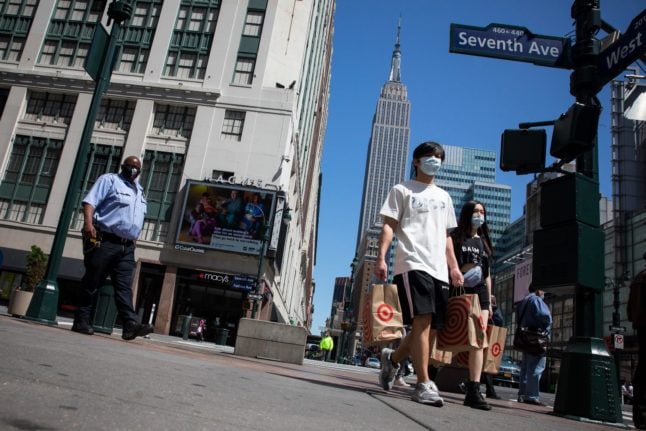Asian giants Japan emphatically beat Sweden in Frankfurt while earlier the United States used their vast experience to get past France in Mönchengladbach.
Despite their nickname Nadeshiko — a pink flower symbolising grace and beauty – the Japanese are proving no pushovers having beaten two-time defending champions Germany in the quarter-finals, and are now through to their first ever final.
“In Japan, it is early in the morning, but nevertheless there were a lot of people watching back home, which gave us strength and courage,” said coach Norio Sasaki.
“That is very good for Japan, we are still recovering,” he added, referring to the earthquake and tsunami which devastated the country four months ago.
“There were so many victims in the area which was devastated and even little things like a win can give people courage and hope. We wanted to give them some strength and courage back and we want to do the same thing in the final.”
Josefine Oqvist had opened for Sweden after ten minutes but Japan striker Nahomi Kawasumi netted goals either side of half-time while captain Homare Sawa capped another impressive display with her fourth goal in five games.
Earlier, Lauren Cheney, Abby Wambach and Alex Morgan kept the Americans’ bid for an unprecedented third title after 1991 and 1999 on track. Sonia Bompastor got a goal back for France after 55 minutes.
“They had the advantage of their history, it’s their sixth semi-final in six editions of the World Cup,” said France captain Sandrine Soubeyrand.
“That made the difference. They were more efficient then us, we had a lot of chances. We need to move up another level.”
“It was our experience that won it,” said US striker Wambach, whose side are through to their first final in 12 years.
“For about 50 minutes they (France) set the tone and had the advantage and I was really asking myself how we could score.”
Despite the French having most shots at goal it was the Americans who went into the locker room with the half-time advantage after Cheney picked up a Heather O’Reilly cross to tap effortlessly into goal after nine minutes.
But Bompastor grabbed the equaliser after 55 minutes as her shot flew past a waiting Gaetane Thiney in the box to curl in off the far post and into the net.
The decision to bring on substitute midfielder Megan Rapinoe proved decisive for the Americans.
And for the second straight game Wambach scored a key header as she rose high to blast in a Cheney corner after 79 minutes with substitute Morgan scoring the third three minutes later.
“I made some tactical errors today, but my coaching staff gave me a hand and switched the midfield around just when France were playing their best football,” said US coach Pia Sundhage.
France coach Bruno Bini added: “I’m proud of my players. We came close to winning. The team were nearly there, but the goal didnt come and you just have accept it.”
In Frankfurt, there was no hint of the Japanese domination to come when Oqvist drilled home her shot after 10 minutes past Japan goalkeeper Ayumi Kaihori.
Her strike took a deflection off the boot of Japan defender Saki Kumagai, which lifted the ball out of Kaihori’s reach, but the Asians were level soon after having noticeably raised their game in front of the 45,434 crowd.
Midfielder Aya Miyama drilled in a cross and Kawasumi wove her way through several Swedish defenders to scramble the ball home on 19 minutes.
With Sweden failing to put any consistent pressure on the Japan goal, the Nadeshiko put the game beyond their reach with two goals in four minutes.
Sawa headed home on the hour mark, her fourth in five games here, with Kawasumi scoring her second when she lobbed into an empty goal from 40 yards on 64 minutes to ensure a final showdown with the world’s top team here next Sunday.
AFP/mdm



 Please whitelist us to continue reading.
Please whitelist us to continue reading.
Member comments